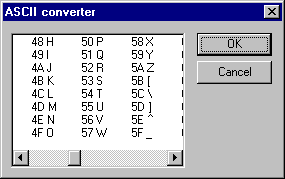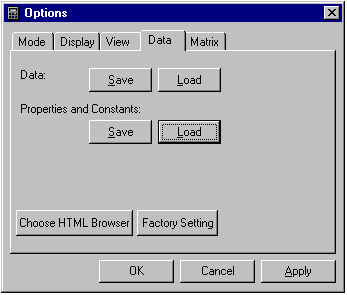Miscellaneous Functions
Stopwatch
In Time mode, buttons are available to control a simple stopwatch.
To start the stopwatch use the start button, which results in increasing time being displayed. This continues until one of the other stopwatch buttons is pressed. The calculator cannot be used for other calculations unless the stopwatch is stopped or set to lap count.
To stop the watch, use the stop button. Pressing start again will cause the watch to resume from the time when it was stopped. Pressing the lap button while it is running freezes the display without stopping the watch. When the start button is pressed again, the display continues, showing the accumulated time. Once lap has been pressed the calculator can be used for other calculations, for example saving the lap time to a memory.
If reset is pressed, the stopwatch is set back to zero. The next time start is pressed the watch will commence at zero.
Pressing count starts a countdown from the currently displayed time. This can be the result of a previous stopwatch time, or the start time can be entered using the keypad. When the countdown reaches zero the stopwatch beeps if "Error Beep" is enabled (see Modes).
The now button sets the display to the current (local) time at the instant the button is pressed. If you need a clock, click on now immediately followed by start which will result in a continuous display of the current time.
The accuracy of the stopwatch may be limited by the hardware device on which it is running. On WindowsCE devices the accuracy is nominally plus or minus 25mS. The stopwatch accuracy is maintained even if the device is switched off, or goes into the suspended state. The nominal accuracy on Windows is plus or minus 1 mS.
In time mode, some of the functions described above can be operated from the cursor (arrow) keys on your keyboard. On Pocket PC devices there is sometimes a cursor device which performs the same function - for example on the Compaq iPaq there is a four-way control pad which functions in the same way as the cursor keys. This makes it possible to operate the stopwatch single-handed.
The arrow keys are mapped as follows:
| Cursor Key | Stopwatch function |
| > (right) | Start |
| < (left) | Stop |
| ^ (up) | Lap |
| V (down) | Reset |
ASCII Converter
In Binary, Octal, Hexadecimal or Base-N modes, you can use the ascii button to bring up a table of ASCII values. The values correspond to the number base being used. Selecting a value followed by OK will result in the value for that character being input to the calculator. Click on Cancel if you want to check an ASCII value without entering its value.
The example above shows the decimal values for some of the ASCII codes. These were obtained by selecting Base-N mode with a base of 10, as explained in the Modes section.
The control chars (0 - 31) show the control sequence and the control character name.
Saving and Restoring Data
The Data tab of the Options dialog is used to save and restore calculator data.
Data values, including the contents of memory and arrays or matrices, can be saved to or loaded from file using the Save and Load buttons. They result in a further dialog box to select the filename.
Physical properties, constants and conversions can also be saved or loaded.
There is a also a button which allows you to choose the HTML browser which is invoked when you click on the help button. This can be used to find a browser if it cannot be located automatically, or if you prefer to choose a browser other than the default.
The default browser is located by searching for each of the following in turn:
- The Windows HTML Help application (Hh)
- Microsoft Internet Explorer (iexplore.exe)
- Web viewer on older CE devices (webview.exe)
- Netscape Navigator (netscape.exe)
- Windows CE help (peghelp.exe)
Reverting to "Factory" Settings
Whenever you change the calculator settings using the Options dialog, or close down the calculator, the configuration is saved to the Windows Registry. The Windows Registry is simply a mechanism for storing data which is part of the operating system. By using the registry, it is possible for an application to maintain a different set of configurations for different users.Sometimes you may want to force the settings back to those when the software was first installed. This is analogous to the standard configuration of a piece of equipment when it leaves the factory, which are often called the "factory settings". Unfortunately, if you simply delete the directory containing the software and all the associated files, and then re-install the software, the "remembered" settings will still be in the registry and will be picked up when the application is started.
The registry is not part of the file system, and is quite difficult to modify. There is a special tool called regedit which usually has to be run by typing the name or finding the file in the Windows directory. It is not normally accessible from the Start menu or Control Panel. The reason is that the registry contains parameters which control the way the operating system works, and it is quite easy to accidentally make the system unuseable while editing it. If you ever need to manually edit the registry settings, or keys (which we do not recommend), they can be found under the key HKEY_CURRENT_USER/Software/FlowSimulation.
If you simply want to get rid of the registry settings, for example to start afresh, there is a button on the Options/Data page labelled "Factory Setting". This will remove the registry entry and prevent its being rewritten when you close down the calculator. You will be warned that the registry setting will be deleted - answer "Yes" to this question. You should then close the calculator (if it is in the system tray you will need to click on its icon and choose Exit). If you continue, any further changes you make to the configuration will be lost. If you enter the Options dialog again, you will be warned of this.
The next time you run the calculator, it will have the "factory" settings,
as if run for the first time. Note that any data in the calculator
will still be there, because this is stored in a separate file (default.dat).
Also, if you have added to the properties database and saved in default.dat,
this will be loaded also. If you want to completely revert to the
original settings you need to do the following:
- Delete the registry key as described above
- Remove the file default.dat from the calculator directory
- Remove the file default.prp from the calculator directory (if present)